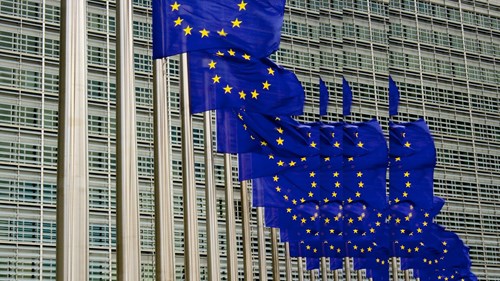EU’s first-ever annual report on FDI screening: key takeaways
On Tuesday, 23 November 2021, the European Commission (“Commission”) released its first Annual Report on the application of the EU Foreign Direct Investment (“FDI”) Screening Regulation (Regulation (EU) 2019/452, hereinafter “FDI Screening Regulation”). At the same time, the Commission released its Report on the control of exports, brokering, technical assistance, transit and transfer of dual-use items, which is the Commission’s last report on export controls before the entry into force of the upgraded Export Controls Regulation.
With the release of the EU’s first-ever annual report on FDI screening, we look at the past, present and future of FDI screening within the EU and will finish by highlighting and commenting on the key takeaways. In summary, most of the around 1,800 FDI dossiers that were handled by Member States did not require formal screening at all. Of the 265 dossiers submitted, the Commission only evaluated 14% in-depth for more than 15 days. Overall, only 2% of FDI was formally prohibited. Despite these relatively promising numbers, the new processes are also struggling with initial difficulties. A focus on fewer important transactions, clearer guidelines for case-handling and more transparency from the Commission’s side are in our view the most pressing concerns.
The past: calls for more protection
In May 2017, the EU Commission released a “Reflection Paper on Harnessing Globalisation”, followed by the Commission communication titled “Welcoming Foreign Direct Investment while Protecting Essential Interests” in September of that year. The Commission found that growing numbers of inbound FDI transactions in the EU were stemming from investors outside the Organisation for Economic Co-operation and Development (“OECD”), sometimes upon government direction or with government backing.
In 2019, the FDI Screening Regulation was passed and eventually became fully applicable as of 11 October 2020. The Regulation establishes a mechanism for EU-wide formalised cooperation on FDI screening for the first time. It was accompanied by administrative reorganisations, with the EU also creating the new position of Chief Trade Enforcement Officer. It also reorganised the Commission’s Directorate General on Trade with a new central unit handling FDI screening and export controls of dual-use items. Accordingly, the annual report on FDI screening was released together with the report on the control of dual-use items referred to above.
The present: the first annual report on FDI screening
The number and volume of inbound foreign direct investments within the EU fell significantly in the first year of the COVID-19 pandemic. The adverse effect in the EU was even stronger than the global average, leading the accompanying document to describe 2020 as an “annus horribilis”. Stricter FDI regulations at the EU Member State level may have played a role (albeit rather minor) in this regard as well. The most severely affected industry sector was the accommodation sector, while information and communication technologies were barely affected, with the effects on FDI in manufacturing ranging in the middle.
The largest share of inbound FDI consists of mergers and acquisitions. More than 77% of these transactions originate from the USA and Canada, the UK, and the European Free Trade Area. China was in fourth place, with a relatively low but rising share of 2.5% in total, representing 8% of transactions that underwent in-depth screening – also due to the fact that Chinese FDI mostly targets high-tech sectors.
The FDI Screening Regulation requires EU Member States to report on their national screening activities. In 2020, nearly 1,800 planned FDI deals were screened by Member States. Of those, only around 20% underwent formal screening. The remaining 80% either evidently did not impact security and/or public order or fell outside the scope of the national screening mechanisms and thus went ahead immediately. Of the 20% that underwent formal screening, 91% were approved after the screening, 7% were aborted (not necessarily due to the FDI procedure) and only 2% prohibited.
During the reporting period (October 2020 until June 2020), 265 FDI dossiers were submitted to the Commission. 80% were closed by the Commission (“phase 1” review) within the 15-day period as set out in Article 6(6) of the FDI Screening Regulation. Only 14% were “phase 2” cases requiring additional information before the Commission could give its non-binding opinion. Interestingly, over 90% of all notifications were provided by only five Member States – Austria, France, Germany, Italy and Spain.
The report also includes criticism from the EU Member States, in particular as regards overly burdensome information requests. Another criticism is that divergences in national screening procedures and timelines hamper cooperation. Member States also seem to think that there are too many non-critical transactions which prevent the system from focusing on crucial and complicated cases. Member States also expressed a need for clearer criteria to determine the necessity of consultations within the EU cooperation mechanism.
The future: trends in inbound FDI
Early 2021 saw the beginnings of a recovery in the inflow of FDI into the EU. However, besides COVID-19, other factors are also dampening quick recovery prospects such as (increasing) trade frictions, rising technology competition, and reshaping and regionalisation of global supply chains.
Within the EU, a trend towards an increase in national screening mechanisms can be seen. While in 2017 only eleven Member States had FDI regimes, the number has now increased to 18. Belgium, Estonia, Greece, Ireland and Sweden are also planning to establish or setting up FDI screening mechanisms, while the Netherlands and Portugal are in the process of expanding their regimes significantly. Only Bulgaria, Croatia, and Cyprus remain without a mechanism and have no known plans to implement one in the future as of yet.
However, it is striking that both the reports about national proceedings and the submissions to the EU cooperation mechanism only stemmed from a small group of less than ten countries, but the FDI-related communication channels between Member States have now been set up for the first time and information is flowing. Finding the right path towards cooperation, after a bumpy start, is becoming even more important.
The Commission for its part stresses that the praised short duration of procedures and the high rate of approved FDI are proof that the new mechanisms are not negatively affecting inbound FDI. However, we should remain sceptical about whether such a positive assessment is convincing for the time being, since the distorting effects of the COVID-19 pandemic are hindering a proper analysis at the moment.
In addressing the comments made by Member States, the Commission insists on the Member States’ obligation to report all national screening procedures. However, given the increased caseload (and the notorious limited resources available at Member States’ authorities) it seems inevitable that some kind of filter will have to be established.
The Commission has launched a scientific study of the national screening mechanisms and the EU cooperation mechanism as a basis for further adjustments to the mechanism. It is also contemplating publishing guidelines for national authorities and investors.
Noerr’s comments: room for improvement
From a transactional perspective, two observations must be made: First of all, for the companies involved the cooperation mechanism – conducted entirely within the framework of the national procedures – is a black box. Under the principles of good administration practice and the right to be heard, at least the Commission’s comments should be made available to the parties to the procedures, even more so if the Commission’s comments are used to trigger restrictions. Secondly, in order to keep procedures short and resources focused, everything should be done to filter out critical transactions and not swamp the cooperation mechanism with unimportant cases. After all, given the overall low number of prohibitions and restrictions, everything must be done to clear legitimate and welcome investments as fast as possible.
In the meantime, the parties to a transaction need to carefully analyse potential filing requirements and ensure that sufficient time is available to get all clearances. Due to the screening mechanism, all Member States will be made aware of transactions that are notified to the authorities anywhere in the EU. In addition, investors may want to consider appropriate catch-all conditions in the transaction agreements to guard against unanticipated filing requirements in EU Member States.





